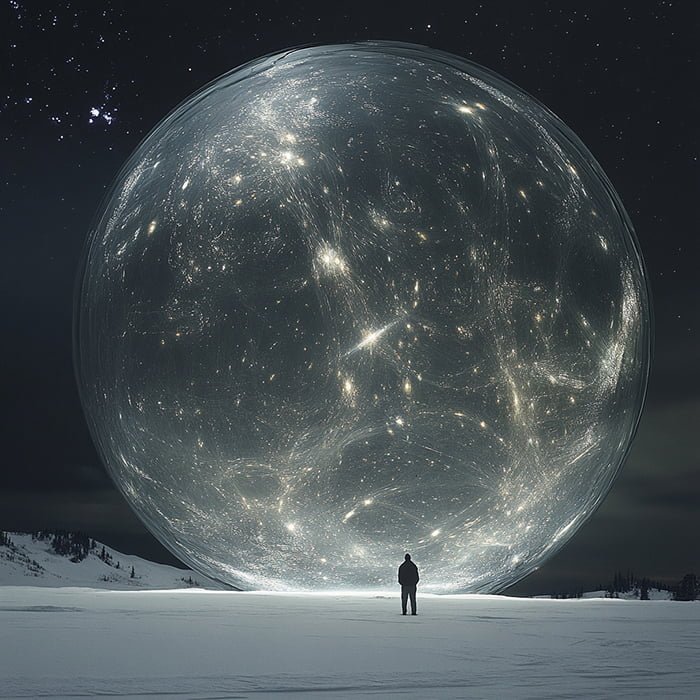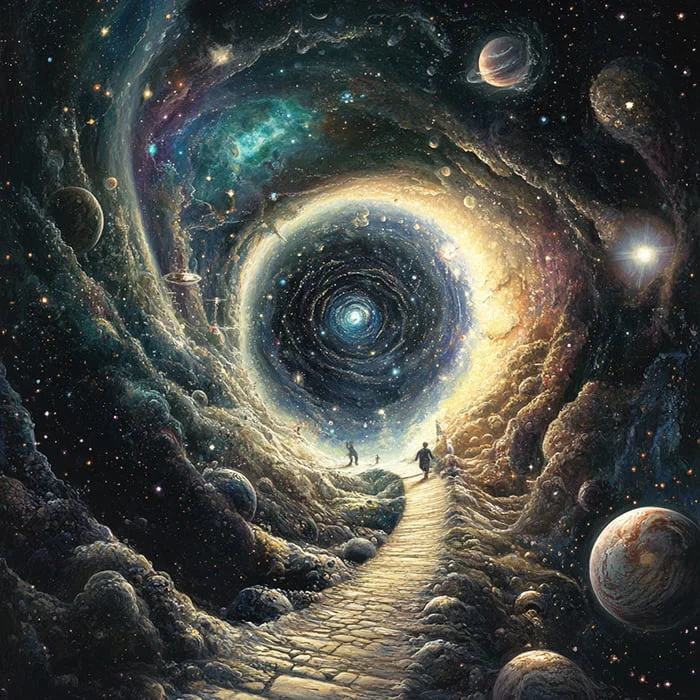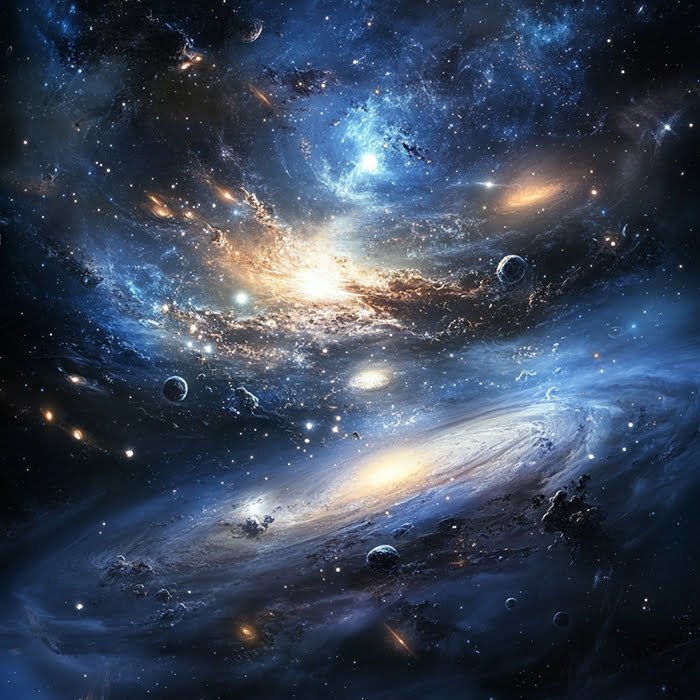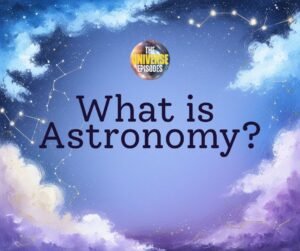The universe is vast, filled with colossal structures like the Hercules–Corona Borealis Great Wall, challenging our understanding of cosmic scale.
Key Takeaways 📝
- The Hercules–Corona Borealis Great Wall, stretching approximately 10 billion light-years, redefines our understanding of cosmic scale and challenges traditional cosmological principles.
- Recent discoveries reveal that the universe contains around 2,000 billion galaxies, emphasizing its vastness and complexity.
- The article explores how structures like the BOSS Great Wall and the Giant Arc question our current models of the universe’s uniformity.
- Insights from the James Webb Space Telescope are reshaping our knowledge of galaxy formation and the early universe, highlighting the potential for future discoveries.
- Overall, the exploration of colossal cosmic structures not only expands our understanding but also underscores the mysteries still waiting to be unraveled.
The universe is an awe-inspiring expanse, a realm of endless possibilities and cosmic wonders. It is a place where size and scale are redefined, and where the ordinary boundaries of comprehension are stretched to their limits. Among the many mysteries and marvels that populate the cosmos, certain structures stand out due to their sheer size and complexity. These colossal entities not only capture our imagination but also challenge our understanding of the universe’s very fabric.
In this exploration, we delve into what is currently recognized as the largest known structure in the observable universe—the Hercules–Corona Borealis Great Wall. We will also take a journey through the cosmos to meet other significant celestial giants, each playing a distinct role in the grand tapestry of the universe.
Hercules–Corona Borealis Great Wall: The Colossal Giant

The Hercules–Corona Borealis Great Wall is an astronomical phenomenon that redefines our perception of scale. Recognized as the largest known structure in the observable universe, this galaxy filament stretches approximately 10 billion light-years in length, making it an unparalleled marvel . It is so vast that it defies the conventional understanding of cosmic structures, challenging the cosmological principle that the universe is isotropic and homogeneous on large scales.
Discovery and Characteristics
Discovered in November 2013 by a team of American and Hungarian astronomers, the Hercules–Corona Borealis Great Wall has a mean size ranging from 2 billion to 3 billion parsecs (6 to 10 billion light-years) . This incredible discovery was made through the analysis of gamma-ray bursts (GRBs), the most luminous events in the universe, which are used as beacons to map out the large-scale structure of the cosmos.
The Hercules–Corona Borealis Great Wall spans across 20 constellations and covers an area of almost 15,000 square degrees of the sky . This vast structure is composed of galaxies and galaxy clusters bound together by gravity, forming a massive cosmic web that stretches across an enormous swath of the universe.
Despite its vastness, there is ongoing research to conclusively determine the characteristics and precise boundaries of the Hercules–Corona Borealis Great Wall. Its existence raises questions about the uniformity of the universe and provides a unique opportunity to study the large-scale structure of the cosmos.
Other Notable Large Structures
While the Hercules–Corona Borealis Great Wall holds the title as the biggest thing in the universe, several other colossal structures contribute to the cosmic landscape.
BOSS Great Wall
The BOSS Great Wall is another significant structure, a supercluster of galaxies that spans over 1 billion light-years across . It is considered one of the largest structures observed in the universe, with a mass 10,000 times greater than our Milky Way . The BOSS Great Wall is two-thirds larger than the previous record holder, the Sloan Great Wall, and plays a crucial role in helping researchers model the physics of the Big Bang and map the shape of the universe .
Sloan Great Wall
Before the discovery of the BOSS Great Wall, the Sloan Great Wall held the record for the largest known structure. Spanning approximately 1.37 billion light-years, this cosmic filament is composed of several galaxy clusters and superclusters, intricately woven together in a vast cosmic tapestry.
Giant Arc
The Giant Arc is a relatively recent discovery, a colossal arc of galaxies located approximately 9.3 billion light-years away in the constellation of Boötes. Spanning a massive 3.3 billion light-years across, this structure challenges some of the basic assumptions about the universe’s uniformity and suggests that our current cosmological models may need revision.
Huge LQG
The Huge Large Quasar Group (LQG) is another significant structure, containing 73 quasars over a diameter of some 4 billion light-years. This massive assembly of quasars is one of the largest known structures in the universe and provides valuable insights into the distribution of quasars and the large-scale structure of the cosmos.
Other Large Cosmic Entities
In addition to these grand cosmic structures, the universe is filled with other large entities that captivate our imagination and expand our understanding of cosmic scale.
IC 1101: The Largest Known Elliptical Galaxy
IC 1101 is the largest known elliptical galaxy, with a diameter of about 4 million light-years. This galaxy is thousands of times the volume of the Milky Way, making it a true giant in the cosmic landscape. Its sheer size is a testament to the vastness of the universe and the variety of structures it contains.
Malin 1: The Largest Known Spiral Galaxy
Malin 1 is the largest known spiral galaxy, with a diameter of 650,000 light-years. This galaxy’s size is remarkable, as it far exceeds the typical dimensions of spiral galaxies. Malin 1’s discovery has provided valuable insights into the formation and evolution of spiral galaxies in the universe.
UY Scuti: The Largest Known Star
UY Scuti is the largest known star in the universe, a red supergiant located in the constellation Scutum. With an estimated radius of over a billion kilometers, UY Scuti is approximately 1,700 times larger than our Sun. The sheer magnitude of this star challenges our understanding of stellar physics and the lifecycle of massive stars.
TON 618: The Largest Known Black Hole
TON 618 is the largest known black hole, with a mass 66 billion times that of the Sun. This supermassive black hole resides in a distant quasar and represents one of the most extreme objects in the universe. Its existence challenges our understanding of black hole formation and growth, as well as the dynamics of quasars.
Shapley Supercluster: The Largest Known Supercluster
The Shapley Supercluster is the largest known supercluster, spanning around 650 million light-years. This massive structure contains the greatest concentration of galaxies in our local part of the cosmos, highlighting the complex and interconnected nature of the universe.
The Vastness of the Universe
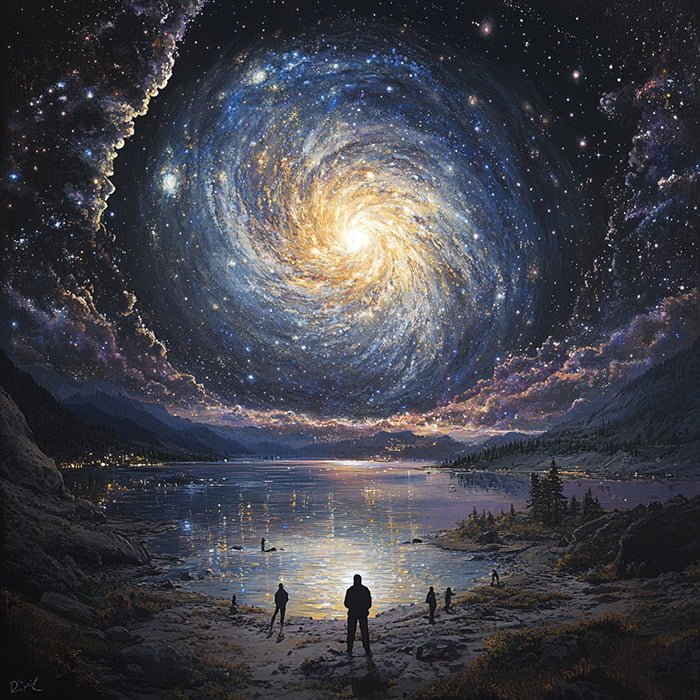
The universe is estimated to be around 13.8 billion years old, having begun with the Big Bang, which set the stage for the creation of space, time, and matter. Galaxies, the cosmic building blocks, formed over billions of years, each containing billions to trillions of stars, planets, and other celestial bodies. The Milky Way, one of the 100 billion galaxies in the universe, has a disk that stretches some 100,000 light-years across.
Astronomers estimate that there are approximately 2000 billion galaxies spread across the unfathomable reaches of space. The Virgo Cluster, for example, contains at least 1,500 galaxies and is centered some 54 million light-years from Earth. The Virgo Supercluster, which holds our Milky Way, the Local Group, the Virgo Cluster, and altogether some 100 galaxy groups and clusters, spans a vast region of space.
The Role of Dark Matter and Dark Energy
Dark matter and dark energy are cosmic mysteries that comprise around 27% of the universe and influence the gravitational dance of galaxies. These enigmatic components play a crucial role in the structure and evolution of the universe, yet they remain poorly understood.
The James Webb Space Telescope’s Contributions
The James Webb Space Telescope (JWST) has revolutionized our understanding of the universe. Its infrared eyes have captured the intricate dance of galaxies, the birth cries of new stars, and the final whispers of those fading into oblivion. The JWST’s latest images are not just pictures; they are keys unlocking the secrets of star formation, galaxy evolution, and the origins of the universe itself.
One of the JWST’s most profound discoveries is the observation of structures from the beginning of our solar system. The detection of ancient ‘universe breaker’ galaxies challenges our current cosmological models and suggests that the universe’s history may be more complex than we previously thought.
The universe is an immensely large place, filled with colossal structures that challenge our understanding of cosmology. From the largest star, UY Scuti, to the largest structure, the Hercules–Corona Borealis Great Wall, these entities provide valuable insights into the nature of the cosmos. As we continue to explore and map the universe, we may uncover even larger and more fascinating structures that challenge our current knowledge. The pursuit of knowledge and understanding binds us together as inhabitants of this cosmic wonder, reminding us of our limitations and the infinite mysteries that await our exploration.

